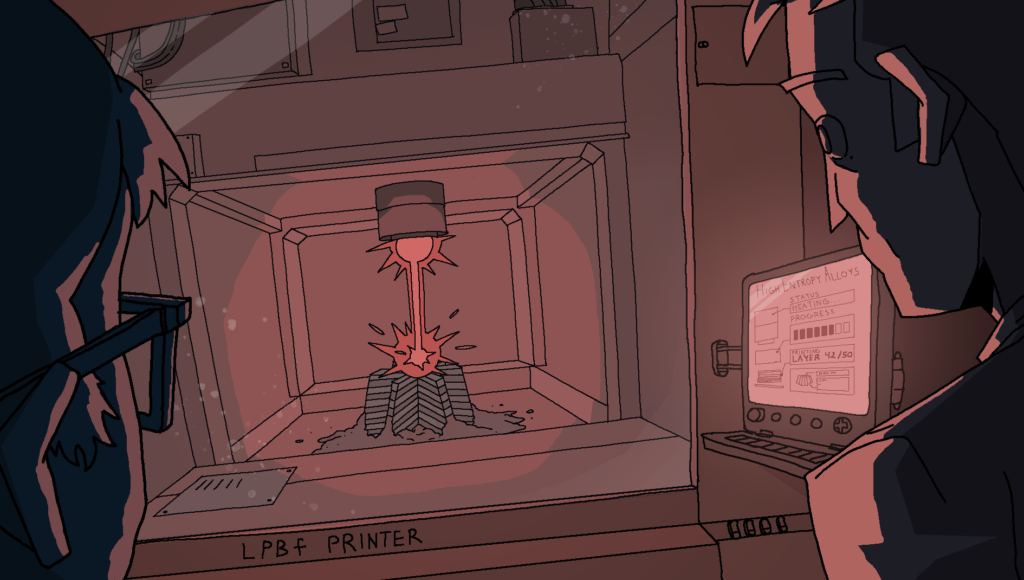Engineers discover a powerful yet flexible alloy that can form tiny, complex structures through 3D printing

Additive manufacturing techniques used to produce metal alloys have gained popularity due to their ability to be fabricated in complex shapes for use in various engineering applications. Yet the majority of studies conducted have centered around developing single-phase materials.
Kelvin Xie’s team in the Department of Materials Science & Engineering at Texas A&M University employed advanced characterization techniques to reveal the microstructure of the 3D-printed dual-phase multi-principal elements, also known as high entropy alloys (HEAs), that display ultra-strong and ductile properties. This work is a collaboration with Wen Chen from the University of Massachusetts at Amherst and Ting Zhu from the Georgia Institute of Technology.
This study was recently published in Nature.
The HEA reported in this study was fabricated through laser powder bed fusion (L-PBF) at the University of Massachusetts at Amherst. L-PBF is the process of heating and cooling materials at very fast rates, which allows the creation of unique microstructures and tailoring of mechanical properties. However, researchers have largely focused on using L-PBF for single-phase materials.
In this work, Xie and his graduate student Dexin Zhao led the characterization effort to understand 3D-printed dual-phase eutectic HEAs. Rather than being composed of a single phase, dual-phase HEAs are layered in a self-organized structure at the nanoscale.
“A eutectic alloy is similar to a lasagna,” said Xie. “First, you have a sheet of pasta, then sauce, meat and cheese. These layers repeat. In materials, the face-centered cubic phase and body-centered cubic phase are like sheets of pasta and the filling.”
The interfaces separating these phases are strong barriers that provide additional strength. The super-fast cooling rate, which is unique to L-PBF 3D printing, created the super fine “pasta sheets” and “filling.” This creates exceptionally high-density interfaces that are critical to the combination of excellent strength and ductility.
According to Xie, this is the first time that the researchers achieved the 3D-printed, nanostructured HEA that displays both ultra-strong and ductile properties, a difficult feat to overcome in materials science due to the opposing nature of these characteristics.
In addition to its favorable physical properties, when used in applications like aerospace or automobiles, this material offers the potential to decrease energy costs.

